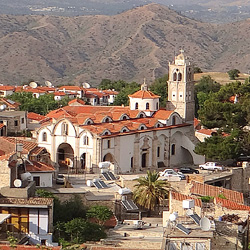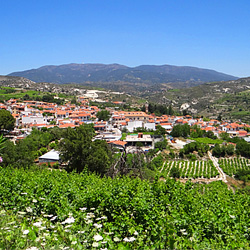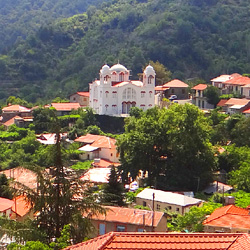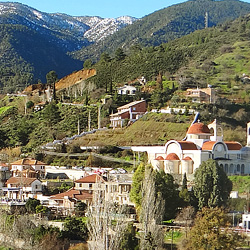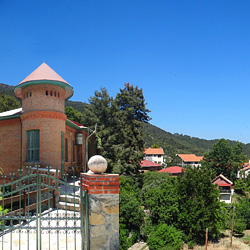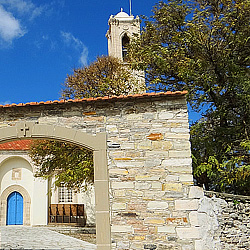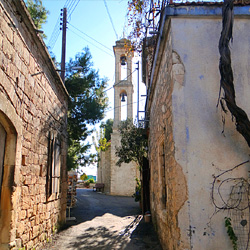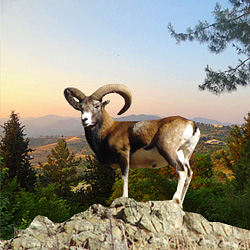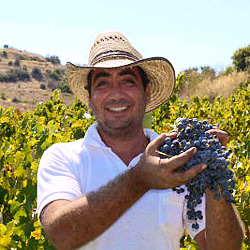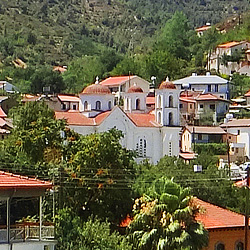History
The village of Arsos is one of the biggest wine producing villages in Cyprus. It lies 40 kilometres from Limassol and 45 kilometres from Paphos It is built on the slopes of Laona mountain, 1092 metres above sea level, with an open horizon on the Valley of the Diarizos River, as far as the sea of Paphos. Thanks to this geographical position, it enjoys a wonderful cool and dry climate in summer and attracts therefore hundreds of holidaymakers.
There are two versions about its name. One says that it comes from the Holy Alsos (grove) of the goddess Aphrodite, where the village is built, and the other tells us that it was one of the 4 towns founded by Ptolemy Philadelphos in the honour of Arsinoe.
Since the most ancient times, it has developed into a big rich wine-producing village. All the inhabitants of the village make their own wine, especially red wine, and keep it in big earthenware jars. They grow mainly dark grapes, xynisteri, as well as new varieties suitable for the production of wine. The jars and the winepress for the production of the famous Arsos wine, as well as the alembics for the production of zivania can be found in most houses
From spring to autumn, the emerald colour of the vineyards dominates all around the village.
The houses in the village are close to each other. It is a classical example of a densely constructed settlement. The narrow streets, the lengthy houses (makrynaria), the spacious two-roomed houses (dichora) and the two-storied houses (anoyia), all built with impeccably hewn stones give, in combination with the tiled roofs, give a special charm to the architecture of the village. The numerous neo-classical buildings are also characteristic.
The hospitality of the inhabitants of the village, the cleanness of the houses and the streets, the wonderful picturesque yards and all the varieties of flowers and greenery are characteristic.
The housewives of the village are famous for their dexterity in preparing the different dishes such as ''palouzes", ''epsima'', ''biscuits with episma'', ''paste'', ''shoudzioukos'', ''kiofterka'', ''arkatena'', ''kattimerka'', '' glyko '' and many others.
The village experienced an important development from 1920 to 1960. The population of the village amounted to 2.000 inhabitants. The unprofitable viticulture, the bad road network in those days and the search for a better fortune in the cities led the village to decay and abandonment. Nowadays, only around 300 people have remained in the village; they keep and transmit a tradition rich in manners and customs.
The Arsos Development Association, which was founded 17 years ago, aims at the maintenance of the manners and customs of the village, and the preservation of its architectural character together with modern development, in order to transform it into a viable place for the young. The main activities of the Association are tree-planting every January, Eastern festivities, the Cyprus night in June, the August festival, the palouze feast etc.

